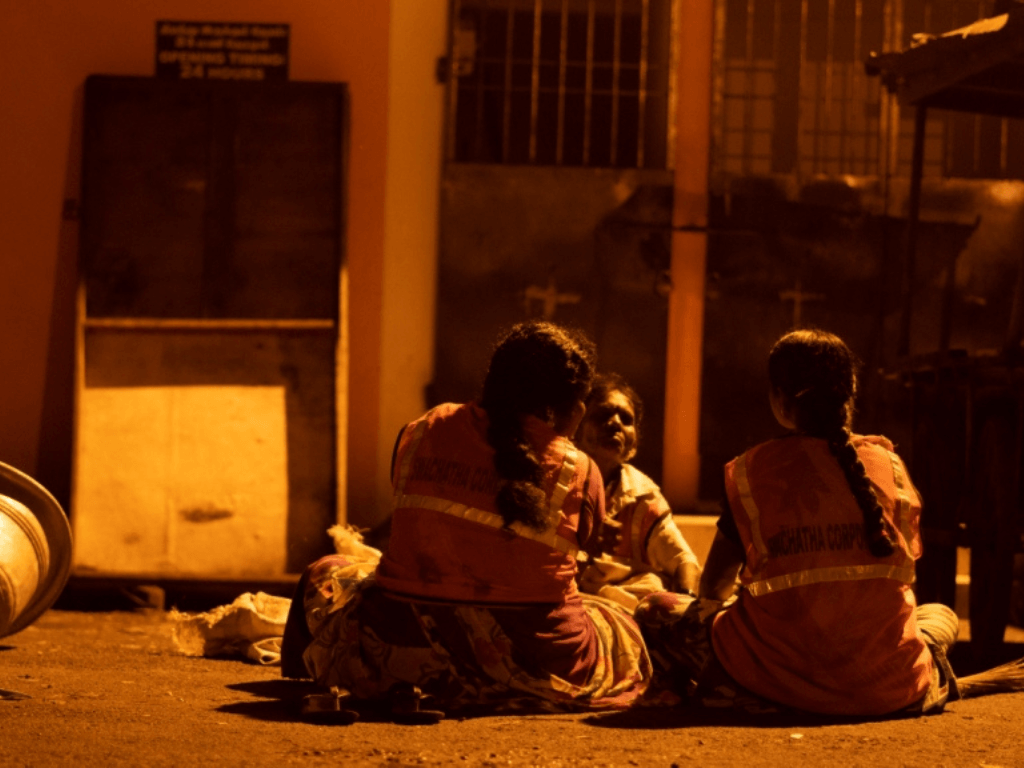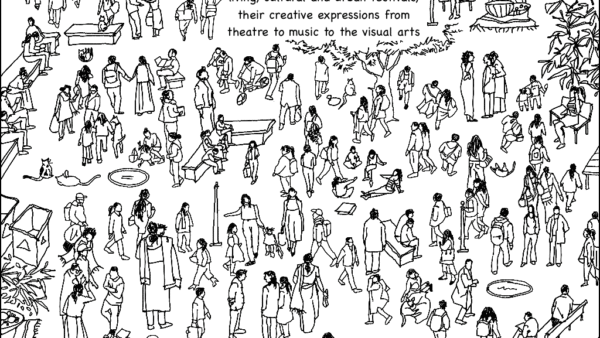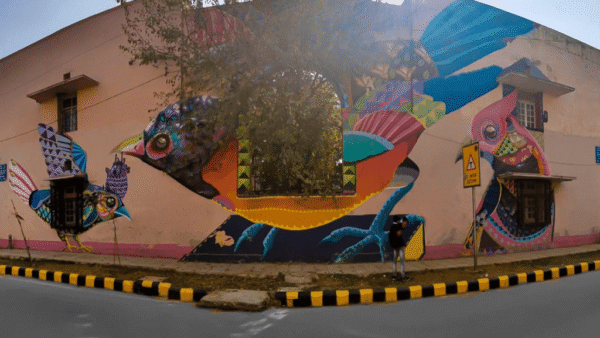Gangawa Kunchikorve, a sweeper employed by the Brihanmumbai Municipal Corporation, works the seven-hour morning shift outside Dadar station in Mumbai. During her breaks, she goes around looking for a comfortable space to rest. This, for her, means a place with the presence of women. Over the last 25 years, the 52-year-old has made friends around her workplace, women vendors like Annie, 60, who give her company and space on the footpath. “Mard log ke saath thodi baithenge (We won’t sit with men),” exclaims Kunchikorve. Even if there was a public park nearby for her to use, it might not have been open.
In Mumbai too, considered among the safer cities in India, casual harassment in public places is a lived reality for most women cutting across geography, caste and class. The city recorded the highest number of sexual harassment cases in 2022 at 667, against 387 in Delhi, according to the National Crime Records Bureau[1] though that could indicate better reporting by women. Safety in cities is a function of safe and accessible open spaces, clean and safe public toilets, gardens and parks available through the day, and so on.
These might seem small needs against the backdrop of urban planning and design, especially in mega cities, but they matter the most to women and go a long way in making cities safer and more comfortable.
For a woman to be in public places, she must plan minutely and rely on the munificence of coworkers or strangers. The planning involves carrying a bag with everything that she might require in an emergency — pepper spray and small knives besides keys, phone, wallet, and water. She has to ensure that she blends into her surroundings with her clothes and carriage, and empty the bladder before leaving home. Even if she drives, she must take busy routes at night though they may be longer, and make sure that she never stops the vehicle anywhere.
Why should it be such an ordeal on an everyday basis to just get by in cities? What are cities doing to make women feel not just safe but belonged? Books like Why Loiter?, Feminist City, and Invisible Women reflected on such questions but the awareness has not distilled into the making of cities. Question of Cities spoke to women across India’s cities about what they want. Most were so resigned to the situation that they had to think hard. Many laughed at the idea that cities could be designed keeping women’s needs in mind. However, it has to be the way forward; it is also not an unattainable aspiration.
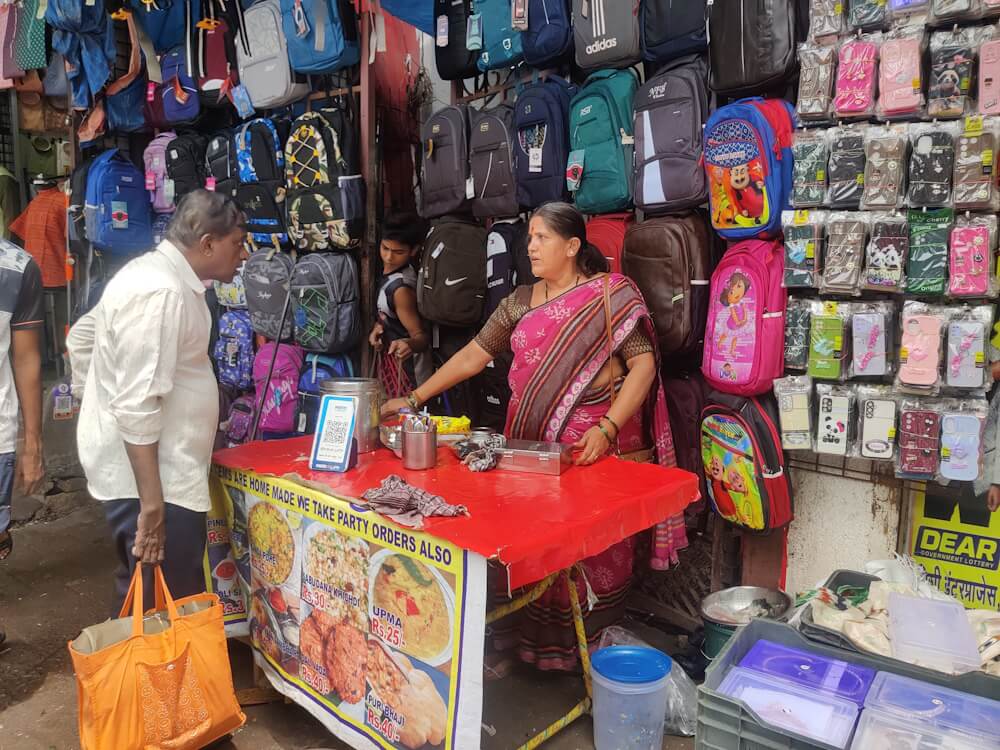
Photo: Jashvitha Dhagey
Women’s right to pee and rest
Diya Rajan, 28, an artist from Bengaluru, imagines that an ideal city will have clean washrooms, usable dustbins, and bus shelters with roofs. “I always look for nearby restaurants or malls, as a backup plan, if I need to use the washroom,” she says. Her experiences of being followed and subjected to male gaze several times keep her on the edge in public places. Rajan wishes for a park where she can play, sit on a bench and read without being stared at, and, of course, for clean and accessible toilets.
That women have had to fight for the right to pee tells its own story of how woefully inadequate the facility is across cities. A research by Praja Foundation, non-profit advocacy group, in May 2024 found that only 1 out of 4 public toilet seats in Mumbai are designated for women. Overall, there is 1 toilet seat for every 1,820 women and 1 for every 752 men.[2] In 2019, Delhi had 1 toilet seat for every 9,630 women and 1 for 3,982 men.[3]
Although some cities have washrooms in parks, at railway stations and other public places, they are filthy and ill-maintained making them unusable for most women. Also, as Shweta Adagale, 24, a resident of Ganesh Murti Nagar in Mumbai’s Colaba, points out, women hesitate because men sit in addas in front of the washrooms. Pregnant women and informal women workers find it challenging to be out for hours without toilet facilities.
Mamta Devi, an ice-cream vendor in Delhi who is in her sixties, had an arrangement with the security guard of a nearby apartment building to let her use the washroom. An altercation with apartment owners made it inaccessible. She says, “There is a public washroom nearby but it stinks and does not have lights or water.” Her two bottles of drinking water remain unused three hours into her shift – a health hazard. Renuka Gowda, 56, with an idli-wada stall in Dadar market, stands for long hours without using the washroom. She says, “The pay-and-use washrooms are a long walk and not clean. So, I drink less water.” This is so common that it has become dangerously normalised.
It is not only the washrooms but rest areas too. Women and men move around differently in public spaces. While men move as if they are entitled to the spaces, women use them only with a purpose and with family or friends. This was established decades ago but the planning of urban infrastructure has not taken the next step to make spaces comfortable for women. The rest areas become significant because women, sometimes, need to move away from the drudgery and oppressiveness of their homes. Sarojben Rajubhai Bhil, 45, works as a security guard in Ahmedabad besides looking after her family, leaving her only 4-5 hours for sleep. “Women can never be at ease,” she sighs.
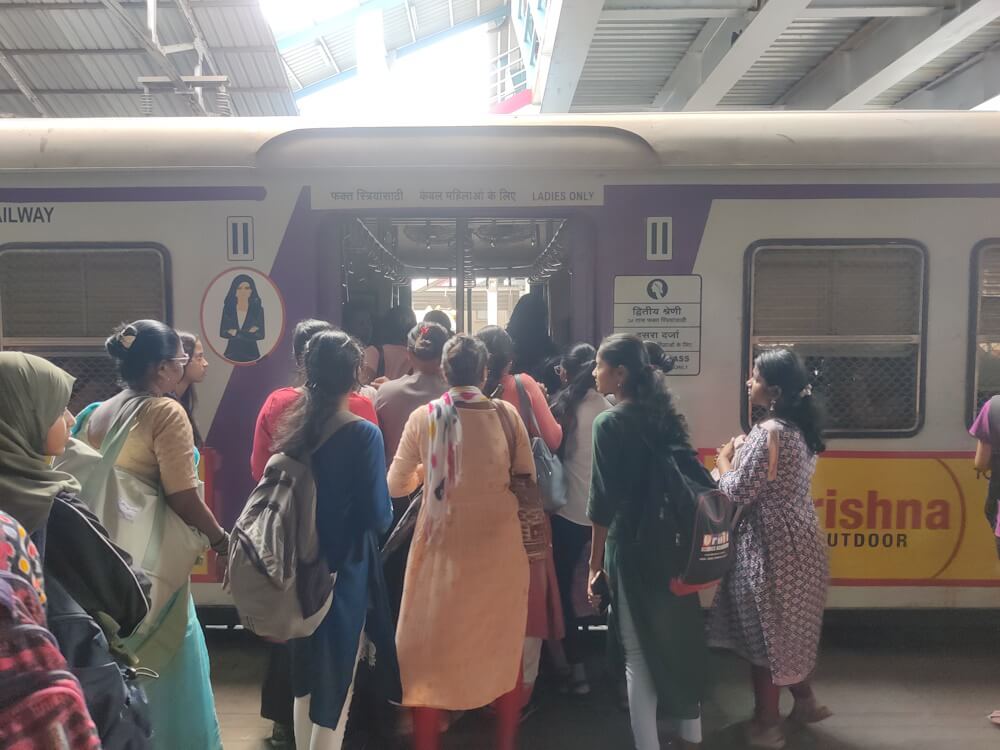
Photo: Jashvitha Dhagey
Travails of travel
A staggering 84 percent of the trips taken by women for work across India’s cities were by public, intermediate public, and non-motorised transport, according to this study.[4] This makes safety, accessibility and reliability of public transport and walking infrastructure more important than it seems but women’s everyday travel is loaded with anxiety and stress. Women are no strangers to uncomfortable stares in the rearview mirror, mansplaining of routes and inquisitive drivers.
When Ananya Soni, 18, had to deal with a chatty driver on one of her first autorickshaw rides to college, she panicked because “he was telling me about his parents’ objection to his relationship and asked me what I would do in his situation. I remember only waiting for the ride to end.” Using headphones while commuting can stop unnecessary conversations, she found.
The dedicated women’s coaches in metro and suburban trains still means women must negotiate crowded platforms where “accidental” touches are common. Even the presence of the police in women’s compartments of Mumbai locals sometimes does not deter harassers and molesters. Men occupy seats or stand here but complaints have yielded little, as this writer found out herself.
Meghna Kamble, 35, a lab technician at Jaslok Hospital, Mumbai, would be more comfortable if a woman constable was posted to keep the men out of train coaches. She does not take late-night work shifts because of the travel nightmare. “We remain stuck where we are,” she laments. Some like Annie use the coach meant for the disabled to avoid men. Kamble insists that GPS be installed in cabs. “I feel relaxed only when I share the cab number with my husband and friends,” she says.
A 28-year-old Guwahati-based reporter, who works late nights, says, “There are no bus services after 9pm. There is a sudden price hike on app-based services whenever it rains.” Refusing to pay the additional tips drivers demand puts women in precarious situations and though the apps allow live-location tracking, they lack provisions for redressal, she adds.
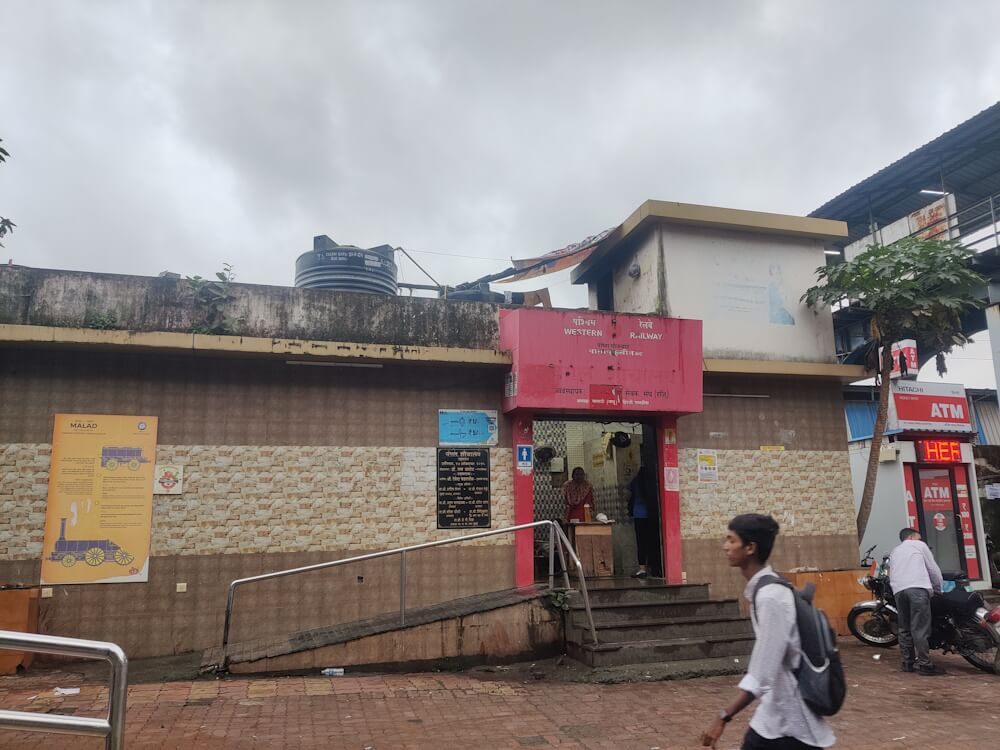
Photo: Jashvitha Dhagey
What women want
Like men, women too want their own adda spaces to chat, share stories, chill and relax, to loiter without feeling threatened.
For Moumita Chatterjee, 54, a private tutor, her hometown Kolkata has public spaces but she would like well-lit streets, better maintained footpaths, and shade over bus stops besides safe workspaces. “I would like to have picnics with friends in parks or go to public spaces if they are both safe and comfortable,” says Chatterjee. The idli seller, Gowda, would like to wander in her city if she felt at ease sitting in parks or on beaches. Jadhav, a single mother, would love to spend time on the sand at Mumbai’s Chowpatty.
At 81, Annada Bora would like to visit the neighbourhood namghar (place for congregational worship native to Assam) to pray and meet her friends. She would have looked forward to this short stroll, an escape from her small apartment had it not been for the city’s inhospitable roads and pavements. “My friends and I spend most of our days indoors as there is hardly any place to go to.”
Women say they think twice before joining protests because that too feels unsafe with groping men and belligerent cops, or the unavailability of transport at odd hours. When Ipshita Gomes, 19, joined a protest march in Kolkata over the rape and murder of the doctor at RG Kar Hospital, she was already experiencing what the city lacked – safe streets, clean public toilets and drinking water, increased transport services at night.
However, small changes are in the offing. Open gyms in public parks across Mumbai Metropolitan Region (MMR) affirm this for architect and urban planner Prachi Merchant. “They are a wonderful idea because I have seen domestic helps use these in groups during their breaks,” she says. It’s still far away from Vienna, for example, where sitting areas with better lighting were added in parks to encourage girls and women to use areas dominated by boys, she adds.[5]
Women want that their safety is not their responsibility alone. Jadhav, the sweeper in Mumbai, or Bhil who spends 12 hours outdoors, or Kunchikorve and Annie, all believe that their safety depends on how they carry themselves. “We have to send a message for men to keep their distance,” says Aditi Mondal, 42, an assistant librarian in Kolkata, “If I am vigilant then I am comfortable and safe.” Women make sure there are a few women in buses and trains, avoid late or odd hours, and are constantly on the vigil. Women like Mondal wish they could be more comfortable and not fear for safety. Soni says, “I just don’t want to be looked at.” Or like Ramwati, 64, a street vendor and domestic help in Delhi, work with husbands and near their home.
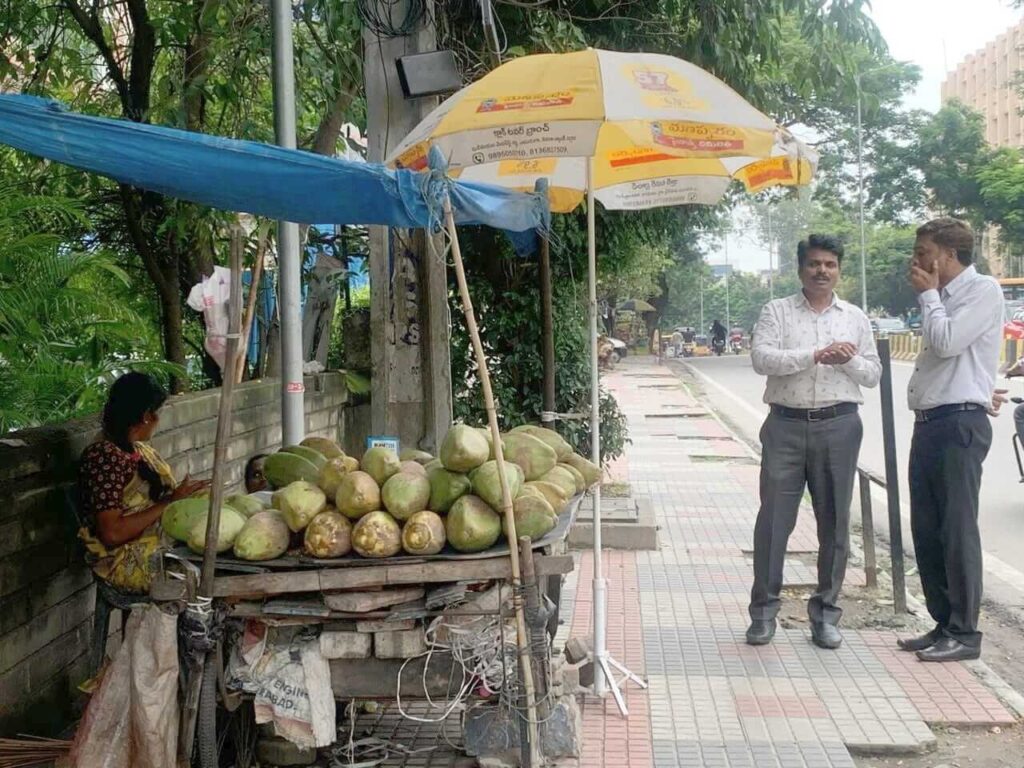
Photo: Shobha Surin
Gender mainstreaming toolkits
Gender equality, empowering women and girls, is the United Nations’ Sustainable Development Goal 5. Cities across the world have taken initiatives to include gender in urban planning. Barcelona is a self-declared ‘feminist city’ with its second Plan for Gender Justice currently under implementation.[6] Vienna pioneered gender-sensitive planning and has conducted close to 60 gender-sensitive pilot projects.[7]
In the journal Buildings and Cities, planning researchers Karen Horwood and Charlotte Morphet dwell on planning toolkits for gender mainstreaming highlighting initiatives in Glasgow, which became the first city in the UK to pass a motion stating that women should be at the centre of urban planning,[8] and also Mumbai, whose municipal corporation instituted an Advisory Committee on Gender.
“The only way to achieve truly inclusive cities is to incorporate the views, needs and requirements of different people – especially of the most vulnerable and excluded groups – at all stages,” states The Cities Alive toolkit by Arup. It covers four themes – safety and security, justice and equity, health and well-being, enrichment and fulfilment – that can influence planning and design to make cities inclusive and welcoming for women.[9]
In India, Making a Feminist City – Planning Safety and Autonomy for Women by Sneha Vishakha of the Vidhi Centre for Legal Policy recommends a feminist perspective to urban planning with legal reforms addressing gender-shaped gaps in policy.[10]
The toolkit SheRISES, by Safetipin, suggests a holistic approach to planning gender-responsive cities through physical infrastructure, mobility, services and response to gender-based violence. It spotlights that women often do trip-chaining. Kalpana Vishwanath, the CEO of Safetipin, in an interview[11] to Question of Cities, highlighted that women having to split these trips makes travel expensive, reducing it to a necessity.
The free bus rides have been a game changer in Delhi and Bengaluru, giving women the freedom to leave the house when they have time to do so. A study by Citizen consumer and civic Action Group (CAG), found that the Zero Ticket Bus Travel Scheme for women in Tamil Nadu made it possible for women to indulge in leisure activities like going to beaches, temples, parks and meet friends and relatives.[12] The Kudumbashree initiatives in Kerala brought in women loco pilots and included transgender people in the upkeep of metro stations, making women feel more at ease.
Campaigns spanning cities have time and again tried to bring the authorities’ attention to women’ right to the city. Mumbai-based Akshara Centre has conducted numerous safety audits over the years. Their ‘Reclaiming the night’ campaign in 2017 included a ‘Night run’, and highlighted that women too should be free to go about their city, no matter what the time of day.
Merchant, also a member of BMC’s Advisory Committee for Gender, conducts workshops in architecture colleges with Akshara Centre, and encourages students to think of building homes incorporating the needs of caregivers who are mostly women. Among the first demands that the Advisory Committee asked for was toilets or convenience blocks at regular intervals with waiting areas, nursing areas, changing areas, and feeding areas.
Merchant asserts the need for recognition of women in the informal sector who work in large numbers and are not counted. “We also need spaces where people facing domestic violence can go to seek temporary refuge. Why can’t we have safe, clean and hygienic toilets in cities? How do we make women feel comfortable enough to use toilets even after it is dark?”
The goal is known, the toolkits are available but governments and planners are slow to come to the table.
With inputs from Srestha Chatterjee (Kolkata), Barasha Das (Guwahati), Nandinie Gupta (Delhi), Simran Ahuja (Bengaluru), and Abinidy TM (Ahmedabad).
Jashvitha Dhagey is a multimedia journalist and researcher. A recipient of the Laadli Media Award consecutively in 2023 and 2024, she observes and chronicles the multiple interactions between people, between people and power, and society and media. She developed a deep interest in the way cities function, watching Mumbai at work. She holds a post-graduate diploma in Social Communications Media from Sophia Polytechnic.
Cover photo: Wikimedia Commons

